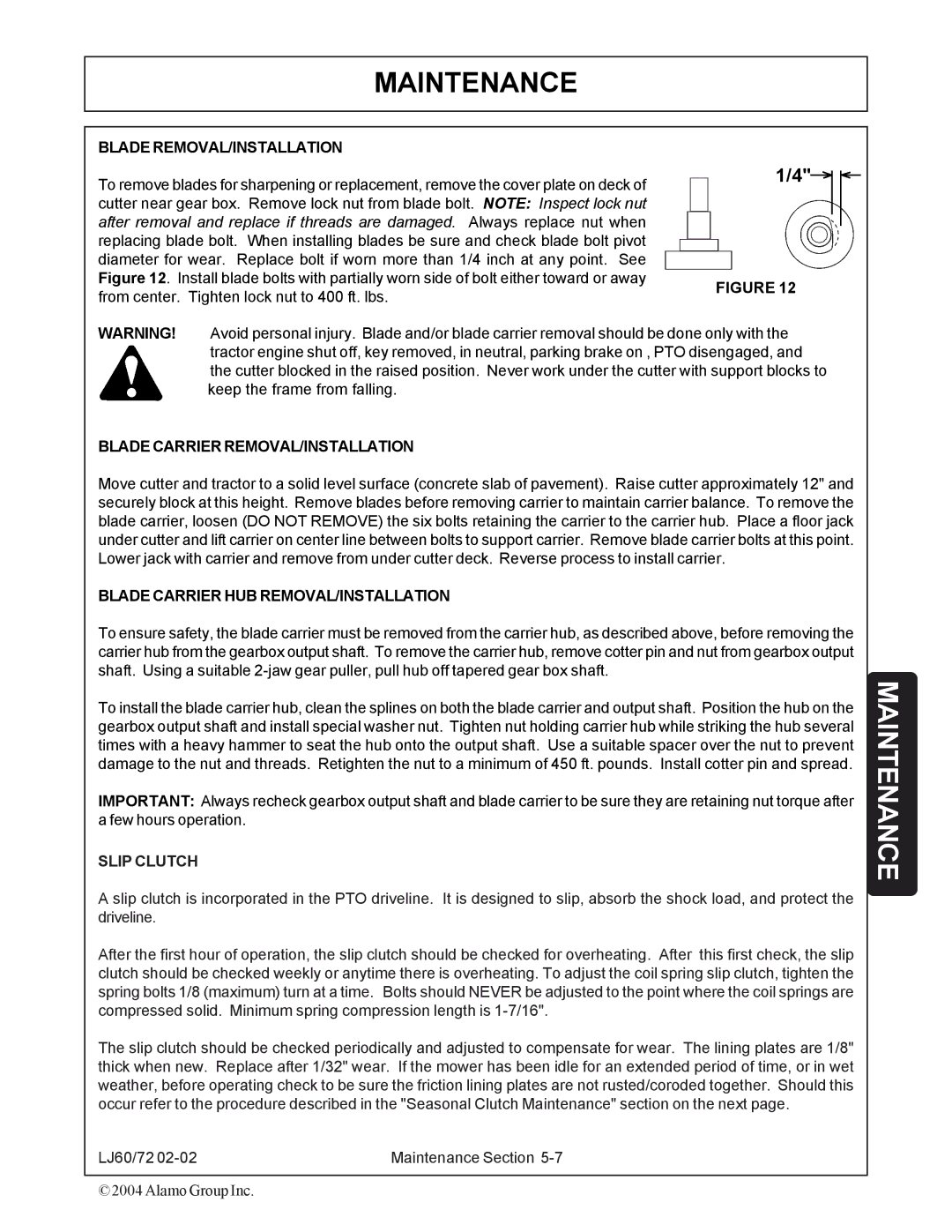60/72 specifications
The Servis-Rhino 60/72 is a high-performance rotary mower designed to meet the demands of agricultural and landscape maintenance operations. With its robust construction and advanced features, this mower efficiently manages a variety of mowing tasks on different terrains.One of the standout features of the Servis-Rhino 60/72 is its cutting width of 60 or 72 inches, allowing operators to cover large areas in less time while ensuring an even cut. The mower is equipped with a dual or triple blade system, ensuring that grass is cut cleanly and efficiently, resulting in a healthier lawn and improved aesthetic appeal.
The mower’s adjustable cutting height adds versatility, enabling users to select the desired grass length depending on the specific application or season. This feature allows for both high and low cuts, making it suitable for mowing thick grass in fields or maintaining lawns at a precise height.
In terms of technology, the Servis-Rhino 60/72 boasts a heavy-duty frame made from high-quality materials to withstand rigorous use. The construction is designed to absorb impacts and reduce wear, ensuring longevity and reliability in challenging environments. Additionally, the mower features a reinforced deck, preventing deformation and enhancing mowing performance even in rough conditions.
The mower's safety features include a quick-release safety latch that minimizes the risk of accidental engagement. It also includes a shielded design which protects the operator from debris and enhances operational safety.
The Servis-Rhino 60/72 is powered by either a tractor or an appropriate riding mower, offering flexibility in use. It is designed for easy attachment and detachment, allowing for seamless integration into existing equipment fleets. The mower can also be transported easily, thanks to its manageable weight and balanced design.
Maintenance of the Servis-Rhino 60/72 is straightforward, with easily accessible components for routine checks and repairs. This simplicity reduces downtime, ensuring that users can rely on their equipment for their mowing needs consistently.
In summary, the Servis-Rhino 60/72 combines robust construction, versatile performance, and advanced safety features, making it a top choice for agricultural professionals and landscape maintenance personnel alike. With its blend of technology and practical design, it offers a reliable solution for all mowing applications.

